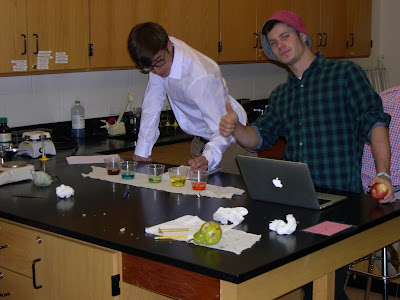
 |
| Mallory gets ready with the "fish bowl" heat sink, while Beth uses the hole punch to produce their leaf disks |
 |
| Lindsay cuts leaf disk from her sample. |
 |
| Samantha is loading her syringe with the leaf disks. |
 |
| Ansley is looking for "leaf floation" in her setup. |
 |
| Neal cuts disks for the next run, while Thomas watches for successful floataion. |
 |
| Indira pumps the leaf disks in the syringe to get the air out and sodium bicarb into the disks. |
 |
| ......meanwhile Lindsay is still cutting disks...... |
 |
| Meagan smiles while waiting for her disks to float. |
 |
| Kaitlin is forcing the air out of her disks as Audrey prepares a new leaf for "disking". |
 |
| Rachael removes the air from this team's disks, while Liv and Allegra cut addition disks, apparently all of this work is under the watchful eyes of their supervisor, Emily |
 |
| Maddie and Hadley ca not belief how difficult is is to get the leaf disk to discharge their oxygen, uptake the sodium bicarb which is heavier and SINK!!! |















